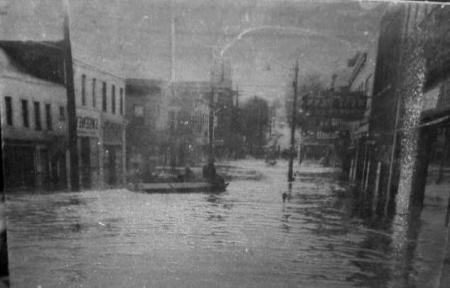Picture blocks from a basement of a old newspaper printshop
Hello so im a printroom supervisor for a screen printing shop. And i print linoleum block and woodcut block at home. But i was recently gifted hundreds of metal pictures blocks. Frome a abandon newspaper co. Most of the pic look from the 30s to the 60s but im not sure how to print them being the small hafetones. I worked with letterpress before but nothing like this. ??????

E2013-06-14_19-34-49_749-1-1-1.jpg
to Redman
The kind of question overlaps my field to some extent in that (at the newspapers where I worked at various times) we printed blocks like this on a proof press. Leastways, it reads as being the same kind of blocks.
Other people may have a different opinion, but I think you would find a lettterpress printer within your range of travel, and find out if he is friendly.
You may save a lot of time if you first find the right person.
The right person will have some of the characteristics off the foreman at a letterpress printery (who had been in my class at school) who immediately (during work time) guillotined a few reams of paper for me so that we could print (small offset) a church newsletter.
Good luck!
Alan.
as usual (and too often),
some of the characteristics of the foreman
should replace
some of the characteristics off the foreman
My apologies.
Alan.
Most newspaper halftones were made from coarse screens, they were meant to be printed on newsprint, try a few different kinds of paper and see what you get.
Just vague memories, (I worked twice on General jobbing side of news paper house(s), but seem to remember some principals, I.E. it was “horses for courses” up to a point, the coarser the screen, 100-150 D.P.I. ish would have been used for the flongs for the rotary(s) and then progressively on up for better stock and eventually Art Paper 3-400 ish d.p.i. Coated Paper had not been invented (perhaps then) >>In essence the same principal as the progression for Television Screen technology, (at least her in U. K.?) (1) 405 lines per inch, >> (2) 625 lines per inch, and (3) 1025 lines per inch, giving High Definition, (high resolution by another name perhaps!!)>>Perhaps the T.V> boffins Bushwacked it from the Plate Process Houses and never payed any royalties. >>>Not fact! Just an Idea, to reproduce halftones now!! might genuine Letter Press ink be the way to Go/Try and with perhaps Rubber Rollers?? Way Back possibly, Polyurethane, Treothene, And GUMMY BEARS were a thing of the future!!!>>All probably after the demise of Half Tones etc.
dickg and Mick on Monotype and all
At the morning daily we used 65 screen if it was to go through stereo (flong) process.
We found we could use 85 screen with
Scanagraver/Scanasizer because the halftone was printing direct to the newsprint.
I showed the Scanasizer halftones to the (acid zinc) halftone tradesmen at the afternoon daily.
For 65 screen the general rule was no human faces less than the size of a thumbnail.
I can find almost nothng about the Scanaizer/Scanagraver today.
As has been said, try with various paper, possibly other variables?
Alan.
to Redman
If all the blocks turn out as well-reproduced as the flood picture, what are you conceerned about? Looks to be an excellent result! But you may find someone who has worked in the field who can put forward some ideas.
Alan.
So what’s the best way to clean them some of our little bit dirty. And a picture of the flood is actually just took it off my phone Camera with flash and I turned black and white. so I haven’t actually printed them yet.so what is the best ink to use on them. I was told offset oil baseink
To Redman
You have added cleaning the blocks to what you want to know.
I am unwilling to suggest what solvent, but try to find if all the blocks are based on the same material.
If you clean, try the process on one of the least valuable, first.
Alan.
I’d suggest something like a fairly un-aggressive solvent like kerosene and an old toothbrush; wet, scrub, rinse, repeat as necessary, and see what the block looks like. If they’re photoengravings there will be a dark-colored resist (often dark blue) on the printing surface that you should not try to remove, but the background non-printing areas should look grey or silvery when completely clean (which you probably can’t achieve). Assuming they are wood-mounted the kerosene should not affect the wood.
Bob
If you want to actually loosen the ink in the engravings then Lacquer Thinner would be the most efficient solvent. It must be used with care, because it can also loosen the adhesive used to hold the plate to the base. A plate brush (available at NA Graphics under composing room tools) with brass bristles surrounded by horsehair bristles is the tool designed for this purpose. Don’t scrub the blocks hard, let the solvent do the work to soften the dried ink.
Paul
Thanks!